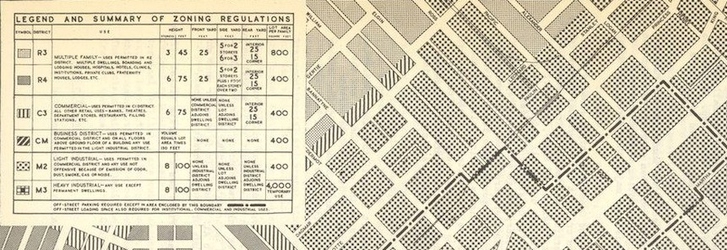Floodplains FAQ

Click on each tab below to view the answer to Frequently Asked Questions regarding floodplains:
The floodplain is any area that is susceptible to being inundated by water from any source. Mostly, this is the area adjacent to a river, creek, lake, stream or other waterway that is subject to flooding when there is a significant run-off event.
Floodplain areas are designated by FEMA on the Flood Insurance Rate maps (FIRMS). You can search the flood maps in your area using FEMA’s Map Service Center to create a FIRMette, or contact our office to determine if your property is within a floodplain. You can also view Idaho Department of Water Resource’s (IDWR) digital flood hazard interactive maps.
There are areas of Valley County with possible but undetermined flood hazards where flood hazard analyses have not been conducted. If you are unsure as to whether your property is located in a floodplain, please contact our office.
NO. Unless it is a permitted use in Valley County Code Title 9. Permitted uses are bridges, pathways, and other uses that would not pose a safety or health risk.
Only with a Floodplain Permit for permitted uses. For example, fill CANNOT by placed to raise a piece of property up in order to build a residence.
Anytime you do anything in an identified special hazard area or within 30’ of any water body including intermittent streams and canals.
You must notify Valley County P & Z, the State of Idaho Department of Water Resources, and the U.S. Army Corps of Engineers prior to any alteration or relocation of a watercourse, and submit evidence of such notification to the federal insurance administration. Maintenance (pilings, rip-rap, etc ) within the watercourse can NOT diminish the flood carrying capacity.
Yes. New construction and substantial improvement of any residential structure shall have the lowest floor, including basement and crawlspaces, elevated two feet (2’) above base flood elevation.
The base flood elevation is the level of floodwater expected to occur once in a hundred years. This is the elevation that the lowest floor of the structure, including basements and crawlspaces, must remain at least two (2) feet above.
Flood zones are the geographic areas that FEMA has defined according to varying levels of flood risk. The following chart gives a brief description of the zones that are present In Valley County.
|
Zone |
Description |
|
X |
Areas outside of the 1-percent annual chance floodplain |
|
A |
Areas susceptible to flooding, but detailed elevations and hydrologic calculations are not available. An Elevation Certificate, prepared by a professional surveyor licensed in the State of Idaho, is required for building. |
|
AE |
Areas with a 1-percent annual chance of flooding. Base flood elevations derived from detailed analyses are shown at selected intervals within this zone. |
|
AO |
River or stream flood hazard areas, and areas with a 1-percent or greater annual chance of shallow flooding, usually in the form of sheet flow, with an average depth ranging from 1 to 3 feet. |
|
D |
Areas with possible but undetermined flood hazards. No flood hazard analyses have been conducted |
Maintaining the flow capacity in streams that cross properties requires cooperation and assistance to prevent flooding and bank erosion.
Do not dump or throw anything into ditches or streams: Trash and vegetation dumped into a stream degrades water quality and every piece of trash contributes to flooding.
State and federal agencies may also require permits prior to approval of your building permit or floodplain permit application with Valley County. It is your responsibility to obtain any necessary permits and approvals.
The following agencies may require permits and offer a joint application process:
- Idaho Department of Water Resources – (208) 334-2190
- U.S. Army Corps of Engineers – Boise Field Office – (208) 345-2286
- Idaho Department of Lands – (208) 334-3488
Additional agencies may also require approvals or permits. This includes but is not limited to: Idaho Department of Environmental Quality and the Environmental Protection Agency.
Failure to obtain the proper permits before you begin work can result in enforcement action by Valley County and/or other agencies, including at a minimum:
- Corrective action
- Monetary penalties
- Criminal indictments and imprisonment
If your application is approved, you may complete the approved work based on meeting conditions of approval, as determined by the Valley County Flood Plain Coordinator. These conditions may include submittal of elevation certificates.
Check your permit conditions carefully. Feel free to contact the Valley County Flood Plain Coordinator at (208) 382-7115 if you have any questions regarding your permit.
An elevation certificate is a form created by FEMA that must be completed by a registered professional engineer or land surveyor licensed in the State of Idaho. The form is usually completed at least twice: once based on building plans and again after construction and prior to issuing a certificate of occupancy. However, in Valley County, Elevation Certificates are typically used to show that your residence is setback 30’ from a high water line and that the first floor (including duct work) is 2’ above the base flood elevation.
When work is proposed in a floodway, a no-rise certificate with supporting documentation is required. The supporting documents must be prepared by a professional engineer who is licensed in the state of Idaho. This certificate demonstrates that a proper engineering study has been conducted and verifies that the proposed work will not result in any rise in floodwaters during a flood event.

